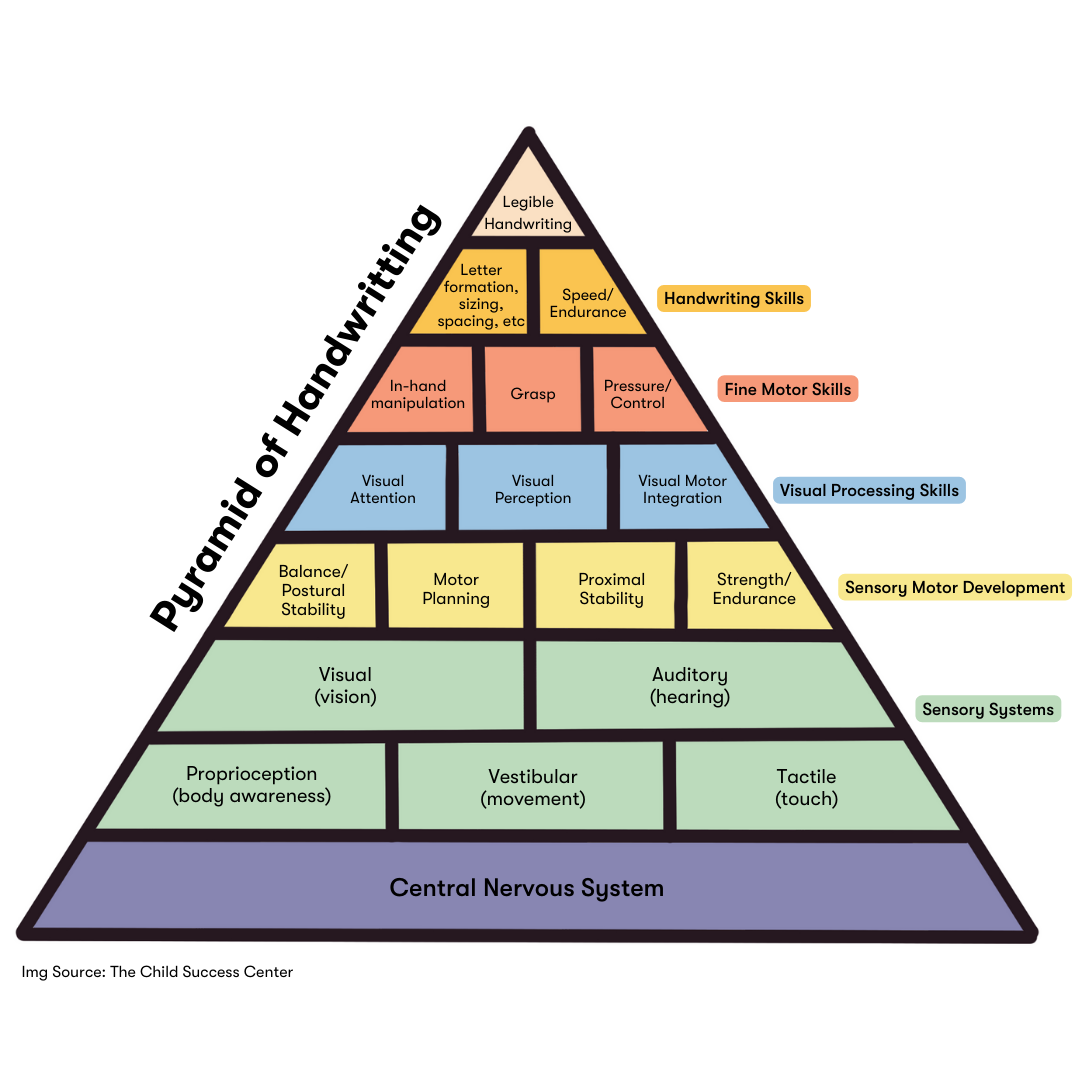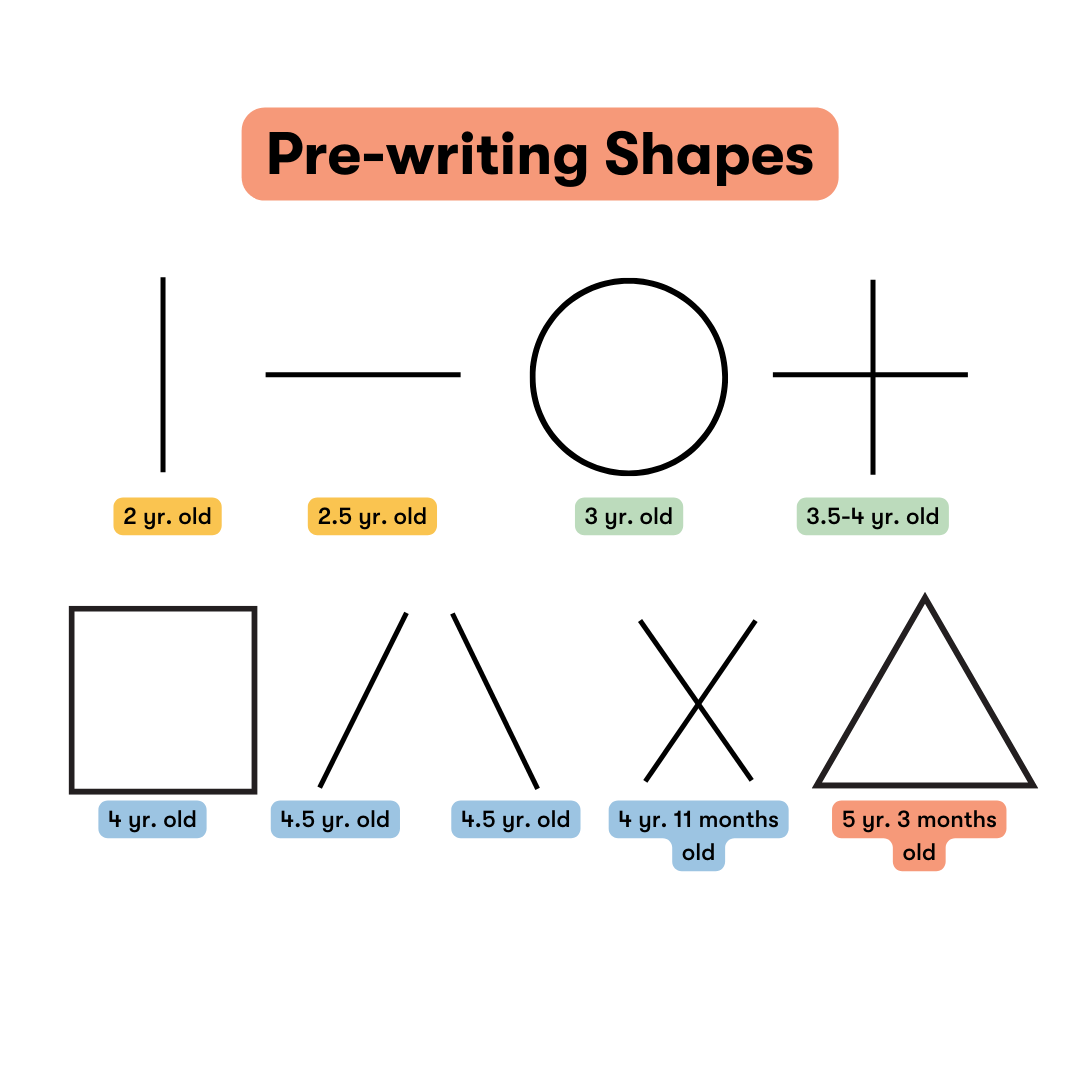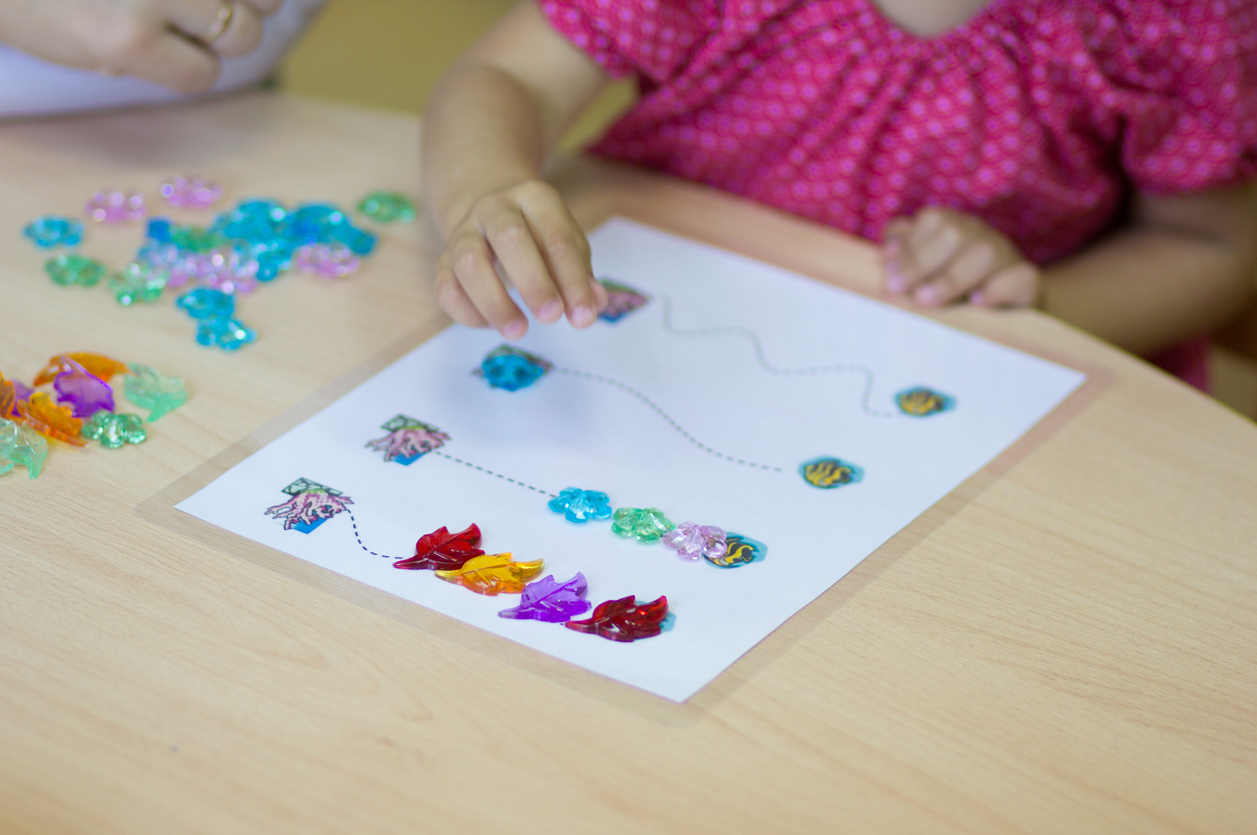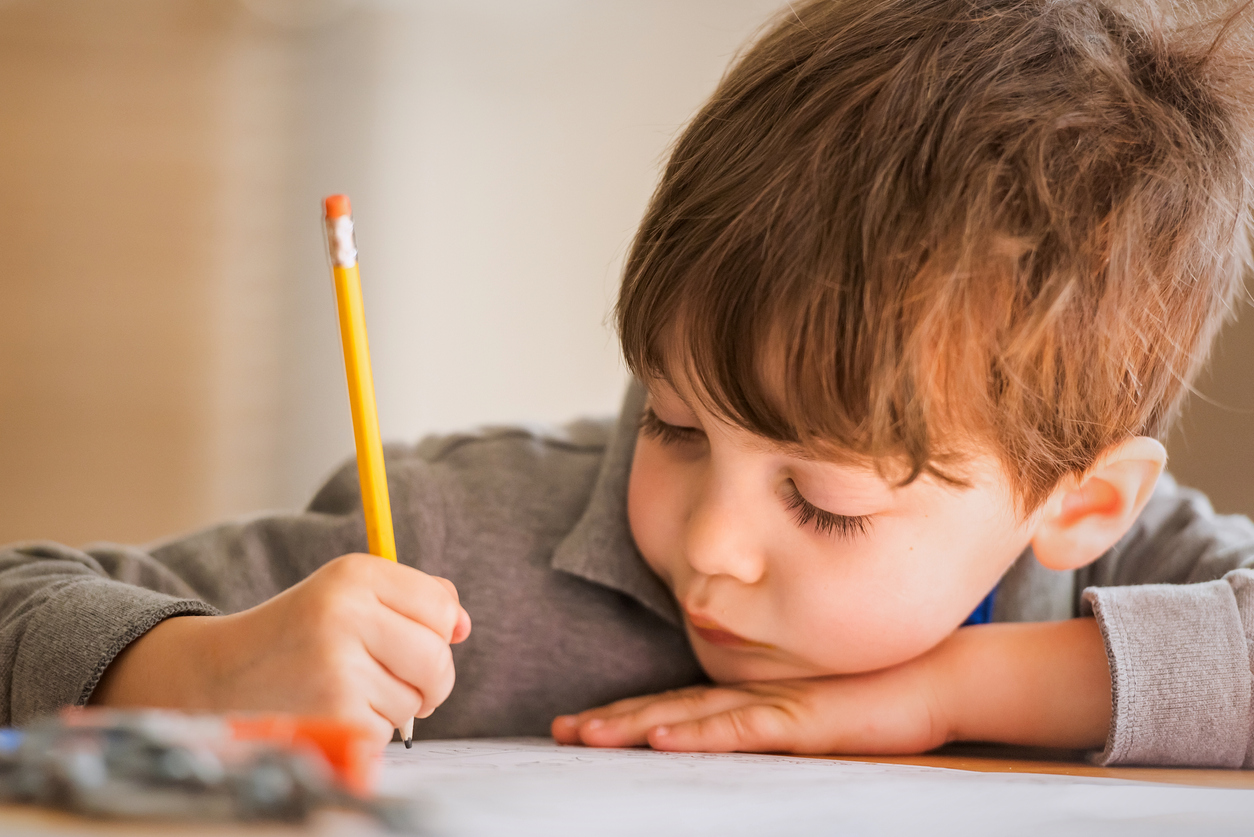Helping my Child with Handwriting
Learning how to write is not as easy for some kids as it is for others. There are a number of skills that need to be mastered before learning to write legibly. Handwriting is a developmental skill that builds upon other important skills like sensory perception, motor planning, visual processing, bilateral coordination, and fine motor skills. This article will provide you with some awesome at-home activities that you can try with your kiddos to help work on their handwriting skills.

Handwriting is Developmental
Handwriting is developmental, which means that as your child ages and learns certain skills, they will also learn to use their pens or pencils in new and different ways. For example, a two year old is less likely to know how to draw a tree, but they might know how to scribble or draw horizontal lines.
Pre-writing Shapes
Pre-writing shapes are lines and strokes that children learn in a sequential order. First, they start by scribbling, then lines, then circles, squares, triangles and so on. Pre-writing is the beginning of letter formation. Once your child masters pre-writing, they will know all the different strokes and shapes necessary to create letters in the alphabet.

Letter Formation
When your child starts learning letter formation, we recommend that you start with capital letters. Capital letters are much more uniform and straightforward compared to lowercase letters. Learning letter formation does not need to happen in alphabetical order. In fact, some capital letters are developmentally more complex than others. For example, if by three years old your child has mastered vertical lines, horizontal lines, and circles, then they might be ready to start forming letters T, I, O, Q, E, F, and H.
Using Sensory Systems
For some of our kiddos who might exhibit sensory seeking behaviors, teaching letter formation using different sensory systems could help further solidify letter shapes and construction for them. You can target gross motor skills by drawing big letters with chalk and having your child trace the letter by walking or jumping on the outline. You can target tactile sensory systems by hiding alphabet letters in sensory sand or making letters with play-dough. If you need help with finding additional ideas, check out this article ‘A to Z – Alphabet Sensory Play Activities’.
Improving Fine Motor Skills
Fine motor skills are all about the coordination of the small muscle systems in your fingers, hands, and wrists. Supporting the development of fine motor skills means working on hand strength and coordination as well as upper body strength. If you are noticing that your child could use some improvement in their handwriting, you might consider working on their fine motor skills.
Grip Practice
Pencil grip is very important for producing legible handwriting. If your child is not holding their writing utensils in an age-appropriate manner, then the execution of their letters, numbers, and shapes will alter. While there are a number of pencil grips out there to train your child’s grip, there are also some at-home activities that you can try to increase those fine motor skills and improve their dexterity.
Some fun activities you can try at home include…
- Using tongs to remove sponge letters from water
- Finger painting or Q-tip painting
- Glue pom-poms on letter outlines
- Matching clothes pins labeled with letters to a paper plate letter wheel

Tracing Practice
Tracing Practice lends itself to learning letter formation. While your child may be able to identify letters correctly, they might still struggle with forming those letters appropriately. If your child is still in the pre-writing stages of handwriting, then practicing tracing straight lines, zig-zag lines, wiggly lines, and loop-de-loop lines will help them develop their stability and fluidity. They can use their fingers, or a toy car, or turn it into a craft by gluing beads or stickers to the lines.
Once your child reaches the stage in which they are learning letter formation, you’ll want to focus on where letter strokes start and end. The goal of tracing practice is to learn the proper formation sequence, so you might consider labeling where to start a letter with stickers or arrows. This might help kiddos remember the motor sequence of forming that letter. See below for some examples of fun activities you can try at home to help your little ones practice tracing letters.
Some fun activities you can try at home include…
- Shaving cream on a tray and have child trace letters with their fingers
- Fill a tray with sprinkles and have child use paint brush to trace letters
- Place letter print-outs behind a sensory bag and have child trace letters
- Outline your child’s name and have them trace letters with dot markers


OT at MeBe can Help
Handwriting can be a challenging new skill for some kiddos, but it doesn’t have to be drag to learn. We hope some of these creative at-home activities will make learning to write a little more fun for your little ones. If you notice your child continues to struggle with handwriting skills, you might seek out additional help from a pediatric occupational therapist.
MeBe OT Services
If you’re ready to learn more about Occupational Therapy, Speech and Language Pathology, Feeding Therapy, or Applied Behavior Analysis services at MeBe, contact us today.
For helpful tips from the MeBe therapy team, check out @mebefamily on Instagram and Facebook and visit the MeBe Family YouTube channel.

